|
I remember the first time I cracked open The Lion, the Witch, and the Wardrobe—I was ten or so, I think? Like the Pevensy children, I fell right into the world of Narnia and never looked back. I didn’t need to get used to the world or think too hard about justifying the magical system. I just lived and breathed the story. For me, any good fantasy story must have that same element of naturalness. If I can’t fall right into it, it’s probably not the fantasy story for me.
That feeling of naturalness is the first thing that struck me (when I stopped to think about it, which I didn’t right away because the story was so compelling) about Emma C. Fox’s soon-to-be-released The Carver and the Queen. The story follows Petr, an orphaned Russian serf who longs to become a renowned and succesful carver of malachite, and Lena, the housemaid to Petr’s teacher who likewise dreams of better things, particularly things better than the arranged marriage to the town’s cruel bailiff. In the process of chasing his dream and his chance to win his and Lena’s freedom, Petr falls into league with Malachanitsa, a cunning sorceress, queen of the underground malachite kingdom. The limited magical elements (no keeping track of complicated systems here!) and battles between gain and selflessness, good versus evil—and of course the alluring evil queen—kept up the Narnia vibes throughout the entire story. It also reminded me, in its fantasy/historical setting and lyrical prose, of Shannon Hale’s early works, particularly The Goose Girl and the other Books of Bayern. It would probably appeal most to readers of the same age as those books as well—advanced 11-year-old readers through teens (and adults, as well!). The Carver and the Queen releases October 3, but you can preorder it now. Many thanks to Owl’s Nest Publishers for the review copy of this book—my delighted opinions are entirely my own.
1 Comment
Good morning, friends! I'm so excited today to welcome Rhonda Ortiz, author of the historical novel In Pieces and its sequel, Adrift, which releases today (8/8)! You guys are going to love reading what Rhonda has to say about her writing and life--I had so much fun with this! Before we get started, here's a little more about Rhonda: Rhonda Ortiz is a lay Dominican, award-winning novelist, nonfiction writer, and founding editor emerita of Chrism Press. A native Oregonian, she attended St. John’s College in historic Annapolis, Maryland and now lives in Michigan with her husband and children. Find her online at rhondaortiz.com. FEH: Welcome, Rhonda! I've read so many books about the American Revolution or about the Napoleonic Wars from French or English perspectives, but In Pieces and Adrift are two of very few I've read set in America during the 1790's. What was it about that time period and location that first sparked a story? RO: Great question. My first attempt at writing Molly Chase’s story was set in 1770s England with an entirely different cast of characters—not even Josiah Robb was there, if you can believe it. Frankly, that story stank. It had a properly structured plot, but the characters had zero chemistry, and I knew deep down that I was missing something fundamental. The Robb family, back in Boston, hovered on the fringes of my imagination, and as soon as I let them into that story, Molly herself came alive. So that was Step One. Step Two came of researching the time period. Josiah is a sailor, of course, and when I learned that over ten thousand American merchant sailors were pressed into British naval service during the French revolutionary wars, I knew I had my time period. FEH: You jump into the historical time and place in such an immersive way in your stories, and you particularly brought the relatively obscure worlds of dressmaking, sailing, and early espionage to vivid life. What area of research required the most effort from you? Which did you enjoy the most? RO: My answer is the same for both questions: everything related to nautical life! The Age of Sail lends itself to romantic visions of men perched upon topgallant masts, the wide sea stretched before them in all directions. But the reality…and the details… I had to learn to sail in my head in order to write Adrift, and what was more, I couldn’t always take the easy way out by writing the sailing scenes from the lubber’s point of view. Writing from Josiah’s viewpoint meant getting both the language and the sailing itself right. Sailing in general has its own jargon, quite thick and difficult to learn, and sailors can be persnickety about its usage. I don’t know what I would have done without my boating beta reader! This said, I’m right proud of myself for having learned as much as I have. FEH: What was your favorite bit of research that never made it into your story? RO: Going back to that failed 1770s English-set story: I learned a fair amount about the history of recusant Catholic families in England. Maybe someday I’ll work that up into a story. FEH: As a Catholic writer, what were the challenges of writing devout, non-Catholic characters? RO: I’m a convert, so writing Protestant points of view is like speaking my native tongue. The greatest challenge is the translation problem: how does one depict various Protestant ways of thinking and being in a manner that makes sense to Catholic readers and doesn’t repulse them? That evangelical fiction is “preachy” is a common cant, but I suspect the problem is largely cultural. Much—not all—of Protestant Christianity tends to be heavily dialectical in its expression, which is not the case for Catholic and Orthodox Christians. What sounds “preachy” to everyone else is perfectly normal for them. In the end, I decided the best approach was to show Protestants as they are, as expressed by each individual character, with respect to denominational differences, and keeping in mind both the religious landscape of late eighteenth century Boston and the influence of various Enlightenment philosophies on religion. Josiah and his mother, as Congregationalists, like to discuss and debate; Molly, as an Anglican, lends more toward liturgical and spiritual experience. And so on. FEH: I've heard romantic stories (including the works of Austen, Montgomery, and Alcott) criticized as setting up unrealistic expectations of what a relationship should look like. I was thinking about those comments as I read your story, which constantly struck me as a realistic view of courtship and marriage, touched with an optimistic joy and hope. (I guess I'm showing my cards here, since I think optimism and realism go hand in hand.) What would your response be to such comments? RO: As a woman writer, the best way to curb romantic idealism is for me to ask my husband for his feedback. I have to chuckle at the number of times Jared has told me, “A dude wouldn’t do that.” For male writers, the reverse is true. Female archetypes abound—the angel, the mother, the temptress, the femme fatale, Action Girl, etc.—which are also romantic ideals. Archetypes, male or female, are but a starting place; the challenge is to go beyond the archetype by allowing each individual character to act as each he or she would in real life. I have also found it helpful to frank about male sexuality, which many romances gloss over. I maintain a light touch in terms of its depiction, but I do acknowledge it. The secondary cast of characters have been particularly helpful here, particularly Mark Findley, Josiah’s raffish friend. Finally, a few rapid-fire questions:
FEH: Who's your favorite Doctor of the Church? RO: St. Thomas Aquinas! FEH: What's your favorite pizza topping? RO: All of them? I’m an equal opportunity pizza eater, and that includes Canadian bacon and pineapple. My New York Italian-Puerto Rican husband thinks pineapple on pizza is an abomination. I suppose he’s allowed to be an expert on these things, but, hey, sweet and savory is a great combo. Right? FEH: Mountains or shore ? The Oregon coast is my happy place—and that counts for both mountains AND shore! FEH: Three authors you admire greatly? RO: Sigrid Undset, Patrick O’Brian (a recent discovery), and too many contemporary authors to name: Roseanna White, Stephanie Landsem, Jocelyn Green, Eleanor Bourg Nicholson, Karen Ullo, Natalie Morrill… Another favorite book of mine is Catherine Marshall’s Christy. I also love children’s author Elizabeth George Speare. There’s a little bit of Nat Eaton in Josiah Robb, not going to lie. FEH: Thanks so much, Rhonda! This interview was a lot of fun! RO: Thank you for allowing me to share about my writing! It was my pleasure! Remember, everyone, today is Adrift's RELEASE DAY! Join Rhonda Ortiz in celebration of Adrift by entering the GIVEAWAY and joining the Virtual Launch Day party on Instagram; here's the link to her profile over there: @writingrhonda. Giveaway: rhondaortiz.com/giveaways Launch Day Post: rhondaortiz.com/blog/adrift-is-here #MollyChaseAdrift #MollyChaseSeries It's a three-for-the-price of one day here, as you get three weeks of vintage reading recommendations all at once! (To learn more about the Vintage Summer Reading challenge that Anna Rose Johnson and I are hosting, click here.) First up, for the "Big Family" theme: Canadian Summer, Hilda Van Stockum. I think I mentioned that I had planned to read one of the All-of-a-Kind Family stories for this category, but I have a bit of a problem in my house where my avid reader children steal my books. It's a good problem to have. Maybe it's one Hilda Van Stockum might have had, as she had six children herself. Those children inspired her many beautiful books, especially her series, The Mitchells, of which Canadian Summer is the second of three books. Of course, as a mama of a large family, my reading of this series zeroes in a bit on Mrs. Mitchell, the wonderfully realistic and yet wonderfully warm and understanding mother of the crew. I think my goal in life is to be Mrs. Mitchell. She takes the mud and the mess and the quarreling and near-death-escapes of her crew in stride (for the most part—as I said, she's wonderfully realistic and she has her moments of fury and panic!). Her understanding brings out the best in each of her children. She may rail against her family's living situation at the beginning of the story (a cabin in remote Canada! with no electricity! or paved roads! or nearby grocery stores! or railings to keep the baby from plummeting off the porch!) but she quickly resigns herself to the situation and joins her children in making what seems less-than-ideal actually become an opportunity for growth and peace and fun. I dare you to read this and not want to rent a remote Canadian cottage for the summer. Call my petty, but my favorite scene is when the six children are stuck at home all day during a thunderstorm and get into a raging, screaming, name-calling brawl. It was a good reminder that even delightful fictional families are at their worst when they can't get outside and run around. For Week 8's theme of Talking Animals, I chose an obscure title by Robert Lawson: Mr. Wilmer. William Wilmer is an accountant at an insurance company who hates his life and his job…until one day he discovers he has the power to talk to animals. What follows throws story-telling rules to the wind. Because pretty much one good thing after another happens until almost the end of the story when a small (but crucial) conflict is cleared up in a single chapter. And yet I was still at the edge of my seat the entire time…because I just wanted to know what the next good thing would be! It's a rags to riches story that would have made a perfect Gary Cooper movie back in the day. And the illustrations! Robert Lawson was amazing. In Week 9 we decided to dive into Vintage Picture Books. To coincide with a quick family trip to Boston, I had to choose Robert McCloskey's masterpiece, Make Way for Ducklings. If you haven't read it… it follows Mr and Mrs Mallard and then their eight little ducklings as they look for a place to raise a family, eventually landing upon (literally) the Boston Public Gardens. It's adorable and timeless. And because I love discussing these things, here's a little bit of my recent instagram post about this week's reading, in case you're not on that platform… I'd like to know what you think about this topic!
*** I have a great story about Make Way for Ducklings. When I was doing student teaching for a pre-school class in college, I planned a story time and craft based around this book. The classroom teacher had reservations. "The kids probably won't be into a book so old," she said. "And the illustrations probably won't engage them much, seeing as they're black and white. I mean, you can TRY, but..." The sentence faded away into ominous obscurity. You guys are my people, so probably none of you are surprised to find out that this group of a dozen three and four year olds absolutely loved this old, black and white (I mean, sepia and white, to be accurate) story. They hung on every word. They played ducklings for the rest of the school year. They told me how the way the mallards had to find a new home made them think of when their parents bought a new house. I think some people have a tendency to write off old books just because they're old. Surely kids won't like them as much as the ones that are shiny and new, right? On the other hand, some people tend to write off new books, because they're afraid the shiny newness can't possibly be as good as the old, tried-and-true goodness. Old books aren't inherently good or bad because they're old. New books aren't inherently good or bad because they're new. You can find goodness, truth, and beauty in both. And you SHOULD. If we stop reading old books (and checking them out from the library), they'll fade into obscurity and we'll lose that beauty, those good stories and profound lessons. If we stop reading good new books, artists trying desperately to share the stories and art and ideas that God placed on their hearts won't be able to live that mission. That's why I care so deeply about sharing good books, old AND new, with my children and with all of you. I know I’m usually all about middle grade fiction over here, but I just finished the most lovely adult historical fiction, and I have to share it with you all: Adrift, by Rhonda Ortiz, the second book in her Molly Chase series.
You guys, Adrift checks all the boxes of things I’d been dying to see more of in a book: Historical fiction of a less-written-about time period (1793 Boston and Philadelphia), check. Fascinating historical details, check. Spies! Intrigue! Puzzles to solve! Check. Romantic banter, check. A beautiful representation of a realistic but God-centered engagement and a healthy, loving marriage, check check. Adrift picks up right where In Pieces, the first book in the series left off: the engagement of Molly Chase to her childhood frenemy, if you’ll forgive me the modern term, Josiah Robb. Josiah has been recruited to be part of the new country’s team of intelligencers, as the war between France and England is threatening American shores. What follows is a story that is simultaneously adventurous and deeply philosophical at turns, while losing none of the good humor and historical richness of Book 1. Here’s the publisher’s description: Boston, 1793—Now engaged, Molly Chase and new federal intelligencer Josiah Robb want nothing more than to settle into quiet married life—or as quiet as life can be when one is hunting down a ring of traitors among Boston’s elite. But the plan has one glaring flaw: Molly herself, and the madness that has plagued her since her father’s death. Until Molly proves herself an asset rather than a liability, Josiah’s investigation cannot move forward. Intelligencer Eliza Hall thought she had left her troubles behind in Philadelphia long ago. When she is sent back to follow a suspect, she’s ready to acknowledge the truth and make her peace—except that the man she loves, who doesn’t know about her past, is assigned to come with her. Now she must outwit her fellow spy and closest friend, lest he hate her for what she had been, while they maneuver to prevent Revolutionary France from dragging the fledgling United States into a war it cannot afford. Both women are in search of a safe harbor. Little do they expect the winds to blow them into the most tumultuous waters of all—back home. Since you’ll ask... Yes, in this case you should really read the series in order. In my opinion, you’d be a bit confused about the details if you jumped right in here. Do yourself a favor and order In Pieces if the series is new to you! You can pre-order Adrift before its August 8 release day (and/or order In Pieces while you're there) at this link: https://rhondaortiz.com/store/adrift . Many thanks to Rhonda Ortiz and Chrism Press for providing me an e-ARC in exchange for my honest review. I'll be doing an interview with Rhonda very soon—any questions you'd like me to ask her? A hidden bonus of being a Catholic author is that I've spent my life steeped in story-worthy elements. You want beauty and drama? Walk into a Mass and breathe in the incense and beeswax candles. Let the music of Byrd and Tallis echo in your ears. See the gleam of brass in the smoking thurifer and the sheen of silk on the tabernacle and vestments. You want the perfect story? Read the Bible, with all its heartache and betrayal and sacrifice and longing and love. Or the lives of the saints, echoing this story in their own unique lives.
But the downside to being a Catholic author? It can get annoying when non-Catholic authors steal from the treasure box of Catholic imagery and items. When they do it well, I don't mind so much (I loved The Inquisitor's Tale, for example…even though it did say Dominicans wore brown...). But when they do it poorly and the book wins acclaim, it's honestly painful. A recent award-winning title by a truly brilliant author missed the mark so much on angels and religious life (to a Catholic, "religious life" means living as a nun, sister, priest, brother, or monk) that I was honestly astounded by its stellar reception. Didn't it matter to anyone else that sacred elements of our Faith were being appropriated to add drama and mystique to a story? Last week I read Back to the Bright Before, by Katherin Nolte--a newly-released story that very much takes advantage of the "Catholic mystique," but also very much gets it right. I am assuming that the Nolte is Catholic or was at some point, because she not only uses Catholic elements carefully and respectfully, but she never lets them get in the way of a really well-told story. It would have been easy to point out much of her symbolism to her readers, but instead she leaves it there like a little Easter egg for her readers to notice or not notice—you don't need to know all the answers because what you're there for is the story. Here's a description from the publisher: When eleven-year-old Pet Martin's dad falls from a ladder on their family farm, it isn't just his body that crashes to the ground. So does every hope her family had for the future. Money is scarce, and Pet's mom is bone-tired from waiting tables at the local diner, and even with the extra hours, it's not enough for a third surgery for Pet's dad. Her five-year-old brother, Simon, now refuses to say anything except the word "cheese." Worst of all? The ladder accident was Pet's fault. She's determined to fix things--but how? Good old-fashioned grit...and maybe a little bit of magic. When a neighbor recites a poem about an ancient coin hidden somewhere on the grounds of the local abbey, Pet forms a plan. With her brother, a borrowed chicken, and a stolen pony, Pet runs away from home. If she can find the coin, Daddy can have his surgery, Momma can stop her constant working, and Simon might speak again. But Pet isn't the only one who wants the coin...which means searching for it is more dangerous than she ever imagined. This dazzling debut novel filled with magic, family, and adventure is sure to be an instant classic. Here's the thing. This book will be classified as magical realism, but to a Catholic reader, it will read as something even better: a story of miracles. As Pet learns in the story and I have learned in my life, miracles are all around but you'll miss them if you're not looking. How wonderful it was to read a story where faith moved mountains and hope overcame the darkest evil! If you want to see it as magic… that's ok. Maybe we can agree it's the "Old Magic" of Narnia and The Secret Garden, a power bigger than the powers of this world, bigger than evil and bigger than even our biggest problems. On a final note—and I know I can't really work this in with a perfect segue—the NUNS ARE SO GREAT. Having lived across the street from a Dominican monastery for several years, and knowing many nuns and sisters very well, I do get prickly when they're portrayed in literature as socially-awkward mystics or repressed goody-two-shoes. Nuns are real people, guys. :) Every single one I've met has entered religious life because she feels called to something bigger and deeper than herself—she is running to a great love, not running away from the world. And that deep love and complete normality was perfectly portrayed in Back to the Bright Before. Sister Melanie, the novice sister who befriends Pet, is just like many young nuns I know: kind and funny and nerdy and normal. I just loved her. For more Marvelous Middle Grade Monday recommendations, check out Always in the Middle! Vintage Summer Reading, Part 6: The Magic Summer, by Noel Streatfeild (UK title: The Growing Summer)7/6/2023 Welcome to Part 6 of A Vintage Kidlit Summer, the summer challenge hosted by me and Anna Rose Johnson. We've been having so much fun re-discovering childhood favorites, exploring new-to-us vintage stories, and connecting with other vintage-loving friends! For more about the challenge, and to see the schedule and our recommendations (you're welcome to join in anytime, even for just a week!), see this previous post. This past week's theme was "Well-known Author, Little-known Book," and once again I took Anna Rose's recommendation—for the win. ;) I'd read several Streatfeild books as a child and as an adult, and I'd even had this one on my shelf for several years after finding it at a library book sale. My first surprise upon opening this book was this lovely dedication. Elizabeth Enright is one of my very favorite authors, so even if I didn't already love Noel Streatfeild, I think this would have tipped me in her favor. It's like discovering a mutual best friend, isn't it?
Just a few pages in, I remembered what a masterful storyteller Streatfield is. Her characters jump off the page, and her depiction of the relationships between the four siblings is spot on. How did such a prolific author manage to create new, unique, believable characters in every story? If you know Streatfield from Ballet Shoes and its "companion" books, the description of The Magic Summer might surprise you a little. When their doctor/researcher father is taken ill on an overseas research trip, four siblings are sent to live with their eccentric great-Aunt Dymphna on the coast of Ireland (hooray for another children-by-the-sea story!). Aunt Dymphna quotes poetry at every turn and is a master at rummage sales, herb-lore, and lobster-catching. She is not quite as skilled at things like keeping house, driving a car, or raising children. The children are nearly left to fend for themselves, with hilarious consequences. They also come upon a mysterious boy hiding in their aunt's old mansion, providing a mysterious side story—and another excellently-crafted character. I'm not sure why the U.S. title is The Magic Summer--there are no fantasy elements in this story, unless you count Aunt Dymphna's unaccountable talent for conversing with seagulls. The U.K. title, The Growing Summer, seems much more apt. Throughout the course of the summer, the challenges and mysteries and fun the children experience lead them to grow in ways they never would have expected. Children today, who can hardly fathom a world where a helpful adult is not a mere text message away, will likely be enthralled by the children's freedom and mastery. What's your favorite little-known book by a well-known author? Did you join in this week's challenge? Next week we're jumping into vintage "Big Family Stories," and I have an All-of-a-Kind Family sequel I can't wait to crack open! Welcome to Week Four of A Vintage Kidlit Summer, hosted by me and Anna Rose Johnson! For more info, including recommendations for each week's theme, see this previous post.
This week's theme was a Book in a Series, which pretty much left me…staring at all my favorite vintage books. :) But I chose one that I remember loving as a child and yet somehow which I'd completely forgotten all the details about by the time I reached adulthood: Friendly Gables, by Hilda Van Stockum. Friendly Gables is the third book in The Mitchells series—one thing I loved as a kid was watching the family grow from five children, to six children, to eight in this final installment. As you may know, I have eight children myself, so reading this book felt like holding a mirror up to my life. Friendly Gables is a perfect little family story (or, little big family story), taking place over Mrs. Mitchell's three weeks postpartum after the birth of twins. SO MUCH in this story reminded me of my life, that it often seemed uncanny. Reading now, I remember vividly my impression of Mrs. Mitchell… I remember thinking, "Wow, she is such a great mother. Someday I am going to be a mother like that." I wish I could say I have succeeded! I am afraid that on my bad days I look more like the villain of the story, stuffy nurse Mrs. Thorne, with her constant heckling about keeping the house tidy and looking out for one another. Still… it's good to have a model to look up to, no? Maybe someday…someday I can be as good a mother as Mrs. Mitchell is! I wish Hilda Van Stockum was still alive so I could find out if her perfection was inspired by reality or by wishful thinking! Another high point of the story was the way the Mitchells' Catholic faith is an everyday part of their life—more so than in the first book of the series, probably because this (and the middle book) takes place in Canada, where Catholicism was more strongly a part of communal life as well as personal life. A line at the end choked me up: "The guests were all grouped around as Monsieur le Curé poured water on the two little heads and solemnly baptized them James Michael and John William. Mother had tears in her eyes. It was part of the joy of giving birth, to bring her babies back to God afterward. Daddy shared her feelings. He had put his arm through hers and she leaned against him." Such a perfect snapshot of a moment and feeling I know so well... I hope you all don't mind a bit of a catch up post! These past two weeks of summer reading have been delightful—in addition to these vintage reads, I dove into a new early reader, a recently-released adult historical fiction and a soon-to-be-released adult historical fiction, all of which I plan on sharing with you soon. I haven't done too much besides read, as after the non-stop pace of play rehearsals and long daily drives for the musical my children were in, my body decided to force me to give it a rest. Luckily sick days are good reading days! For week three of the Vintage Kidlit Summer reading challenge I'm hosting with Anna Rose Johnson, the theme was Magical Adventures. We actually both chose to read Half Magic, by Edward Eager. As one commenter on Instagram pointed out, this book is a book-lover's dream, as old favorite stories are woven into the plot and environment of the story. After just a few pages, I was ready to dive into E. Nesbit again—and maybe I will, later this summer! For week four, I re-read Emily's Runaway Imagination, which I now think may be Beverly Cleary's most underrated book. I love the episodic style and historical setting (she wrote it as historical fiction, unlike her Henry/Beezus/Ramona stories). I love the little vignette scenes as well as the drama of the biggest plot point: can Emily and her mother bring a library to small-town Oregon?
What surprised me most, not having read this since I was about ten, was one very important and understated theme in this story: racism. Not exactly what you'd expect from a Beverly Cleary novel, right? And yet I found that Emily's experiences relating to her elderly Chinese neighbor had a ring of authenticity and courage. At the beginning of the story, Emily is afraid to take the road that goes by Fong Quock's house—not, as you might expect, because she is afraid of the Chinese man, but because she is afraid of herself. She has a hard time understanding his accent, as he is the only Chinese person she has ever met, and she is afraid she will hurt his feelings if she misunderstands. She's also honestly afraid of embarrassing herself because of her misunderstanding, which I also find very relatable—how often are our intentions totally pure? Throughout the story, Emily always speaks of Fong Quock with respect and admiration, but her fears almost make her miss out entirely on the chance to connect with him in a genuine way. Now, like many vintage books, Emily falls into a few stereotypical depictions of Chinese that I'm sure modern readers may justifiably object to. In these cases, I like to take Mitali Perkin's advice and read more widely, to get a more full and nuanced view of any pinpointed time and place. Certainly Emily's experiences with her Chinese neighbor seem honest and good-hearted…but what would the point of view of a Chinese immigrant in 1920's Oregon look like? How would his version of the story look different? Maybe you all can help me out there. Do you readers have any good recommendations for stories of Chinese immigrants to the Northeast U.S. in the 20's? This week, we're moving on to A Book in a Series—which pretty much encompasses about 80% of my favorite vintage books, so I'm having a hard time choosing. Any must-read series on your lists of favorites? We've arrived at Week 2 in our Vintage Kidlit Summer Reading reviews! (You can learn more about this summer reading challenge that Anna Rose Johnson and I are hosting in this post.) This week's theme is Moody & Mysterious, and I again chose to read Anna Rose's recommendation: Mystery on Heron Shoals Island, by Augusta Huiell Seaman, originally published in 1940.
Here's the publisher's description: Fifteen-year-old Marty, her grandmother, and their macaw, Methuselah, live in a big old family house on Heron Shoals Island. When they’re asked to board a young musical prodigy, his father, and his professor for the next couple of months, Marty senses disaster on the horizon. The group soon becomes friends, though, as they find themselves working together to solve a thrilling and complicated mystery. If they can solve it, life at the old home on Heron Shoals Island will never be the same again. Guys, I LOVE island stories. This makes two in a row, and I could easily just specialize in kids-on-an-island stories this entire summer. This one was very different from last week's lighthearted family story. The suspense and danger were real, but they never got too intense. (I'd have no issue handing this to a young, precocious reader.) The mystery itself was slightly predictable to me (I mean, I'm a writer, so it's hard to surprise me with a plot!), but very engaging and complete with a satisfying ending. My favorite part, though, was the description of the hurricane that takes place at the climax of the book. I'd heard stories from grandparents and elderly friends of the Great New England Hurricane of 1938—clearly that was the inspiration for the terrifying storm in this story. Every summer during hurricane season, the weather channels here in CT pull up the old photos and first-hand accounts, so it was easy to visualize exactly what Seaman describes in her story. And of course placing it within a story made the storm come so much more to life! This week we're diving into some light fantasy with "Magical Adventures." I'm already delving into an old favorite, Half Magic, by Edward Eager. Are you joining us this week? I'm also linking up today with Greg Partridge for Marvelous Middle Grade Monday—for some more current MG recommendations, be sure to check out his blog! Welcome to Edition 1 of 12 in my Vintage Kidlit Summer Reading reviews! (You can learn more about this summer reading challenge that Anna Rose Johnson and I are hosting in this post.) This week's theme is Summer Vibes—it was NOT easy to choose just one vintage book for this theme (and I may have cheated—overachieved?--a little by reading other summer stories with my kids. But today I'm spotlighting my official read and new discovery: Seacrow Island, by Astrid Lindgren of Pippi Longstocking fame.
Don't get me wrong: I enjoy Pippi very much. But I can't understand how so much of Astrid Lindgren's reputation seems to rest on that one character. If you haven't read Ronja, the Robber's Daughter or The Children of Noisy Village, for example, you're missing out on much of Lindgren's humorous and emotional depth and breadth. Seacrow Island took me in a very different direction, but no less delightful, as it's a story that was contemporary when Lindgren wrote it, and solidly in the realm of realism. The mention of blue jeans and polo-neck sweaters and motor boats made me forget temporarily that I was in a Lindgren novel—until the humor hit. And Seacrow Island really is one of the funniest realistic fiction stories I've ever read. Some of that humor is situational, but for the most part, it's all about the people. Much like Jane Austen or L. M. Montgomery, Astrid Lindgren has the ability to write characters that make you laugh out loud while still being essentially human and deeply real. We laugh at them, but we never mock them—perhaps because we see in them a bit of ourselves or of someone we love. Seacrow Island is inhabited by a cast of intensely lovable and mostly humorous human beings—with a few animals thrown in for good measure (I have never had such a warm feeling toward wasps as I did when reading this!). At the center of the action is the Melkerson family: Melker, the dreamy and ever-so-slightly pompous-in-a-lovable-way writer; Malin, Melker's oldest daughter, who at nineteen is the mother figure for her motherless brothers and the irresistible love interest for any nearby young men; Niklas and Johan, the 11- and 12-year-old adventuresome and trouble-making brothers; and Pelle, the 7-year-old, tenderhearted baby of the family. When the Melkersons rent a tumbledown house on Seacrow Island for the summer, the children are quickly befriended by the locals, particularly Tjorven, the six-year-old "queen of the island," who has the entire population wrapped around her chubby and charming finger. There is little intense drama in the story, and yet I found myself unable to put it down. The everyday drama of forming friendships and falling in love and fearing change and wanting a pet—all these familiar situations were so adeptly crafted that they held my attention with the magnetism of a thriller. Besides the characters, Seacrow Island itself was such a well-drawn and delightful setting, I wanted to book a plane to Sweden before I'd turned the last page. Thank you so much, Anna Rose, for recommending this book! Now, friends, what have you been reading? If you've joined in the Vintage Kidlit Summer, please share! I'd love to read your own book recommendations; if you've highlighted one for this week's theme, please leave a link in the comments—or use the comments section to share a one or two sentence spotlight here. :) As a treat for my kindred spirits, I'll be giving away a paperback copy of one of my vintage favorites. Just leave a comment here about what you've read, or share on instagram with the hashtag #vintagekidlit summer (and, if possible, tag me and Anna Rose in your post @faithhough42 and @annarosewriter). I'll choose a winner on Wednesday 6/7, and can mail a copy within the United States. Good luck! |
About meHi! I'm Faith. I blog about books and creativity, family and faith. Welcome! Archives
November 2023
Categories
All
|
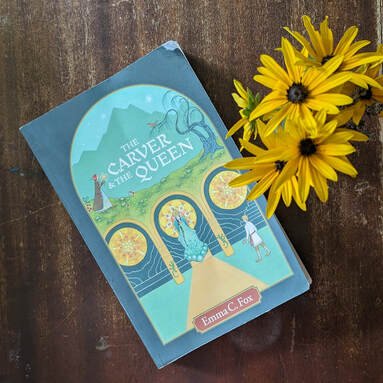

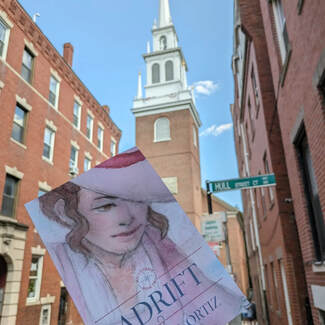

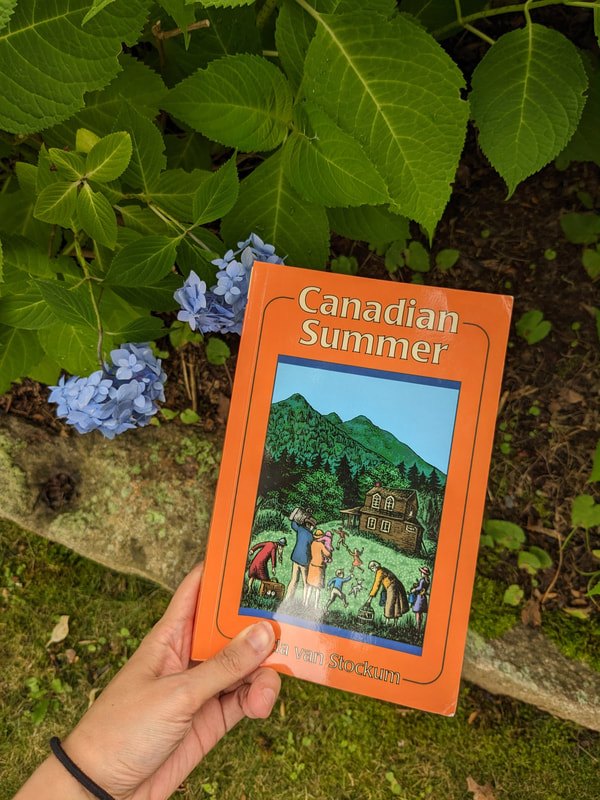
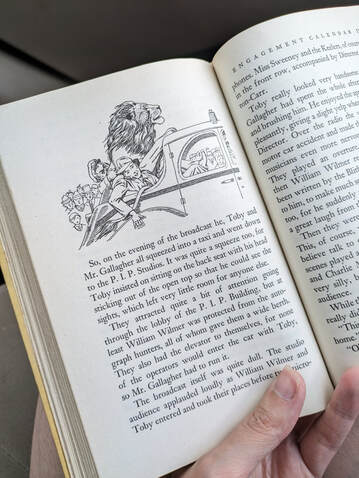
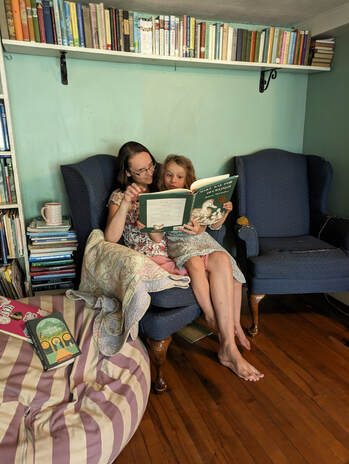

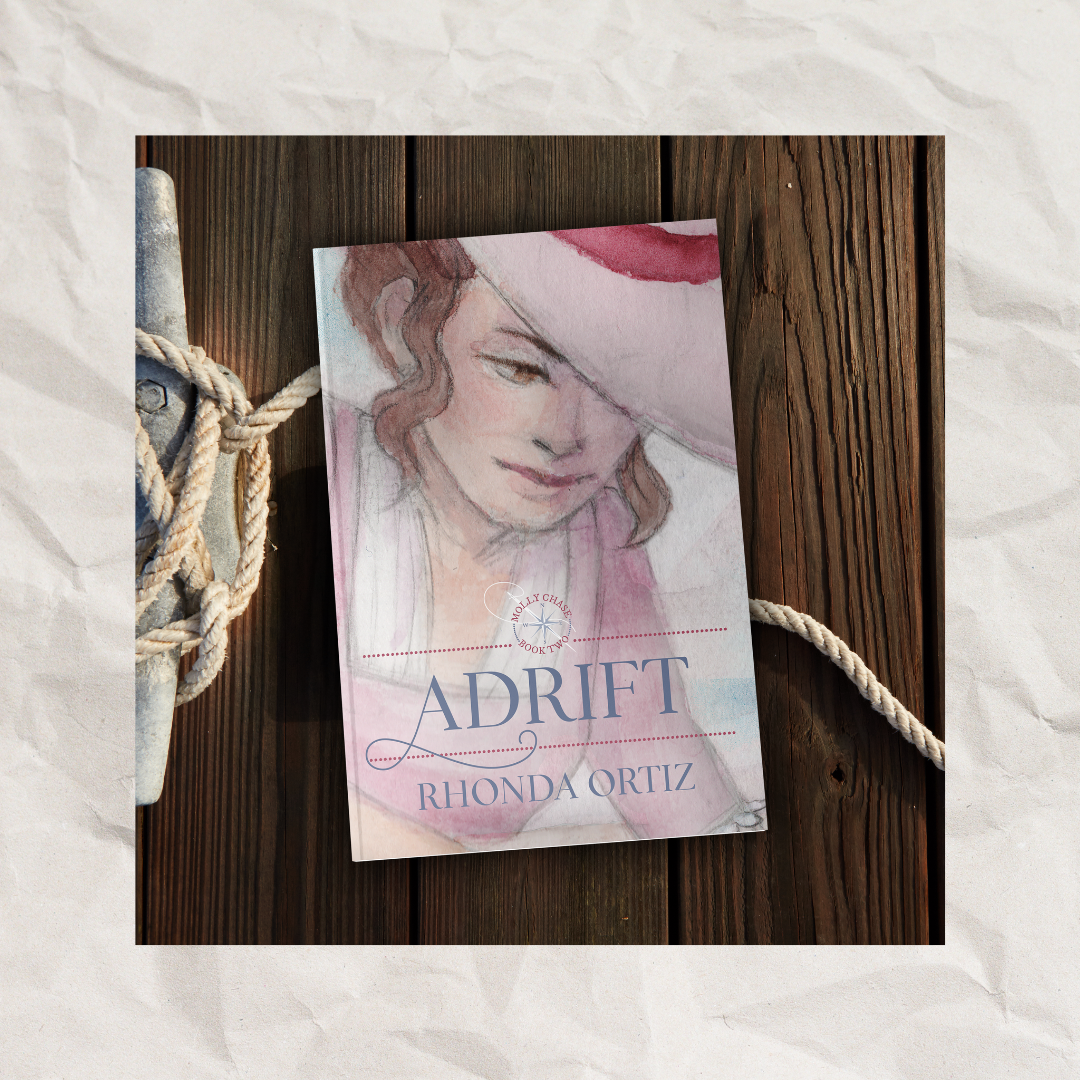
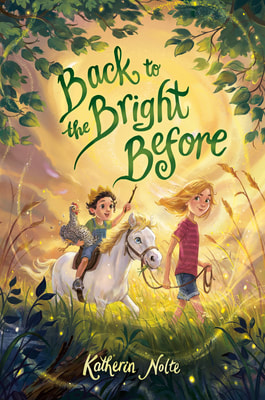
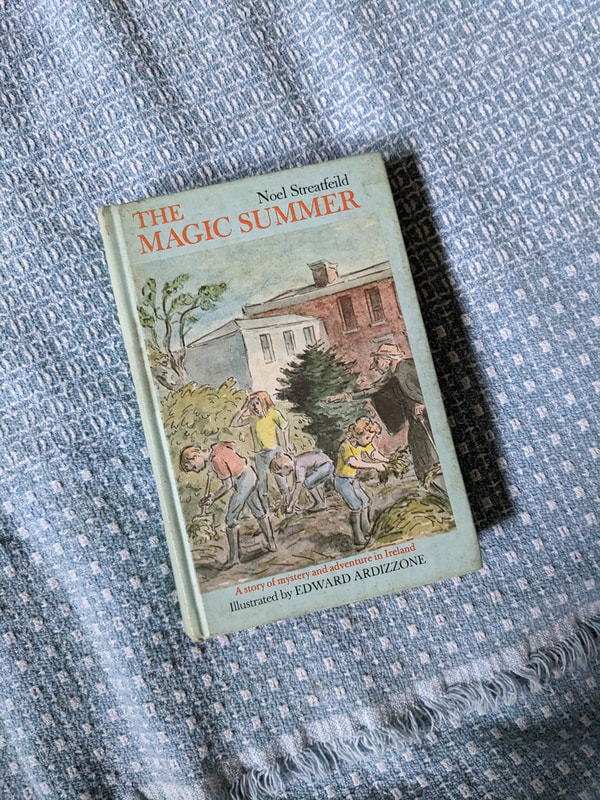
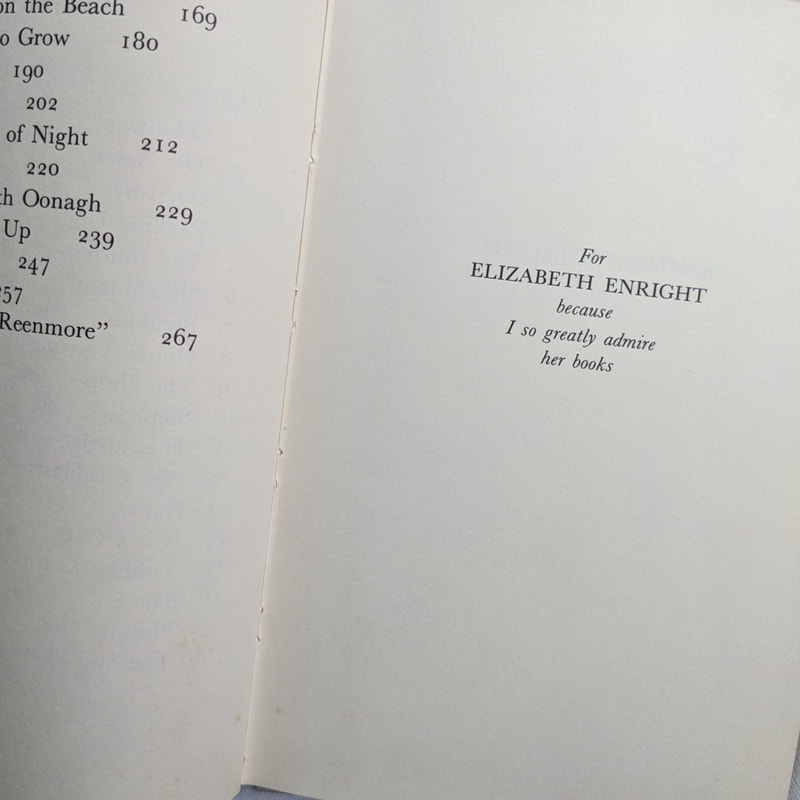
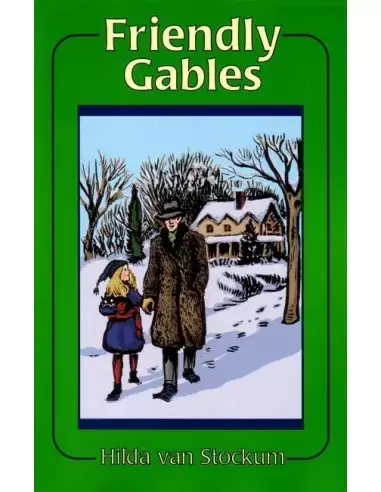
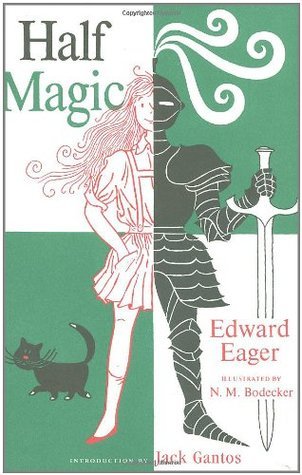
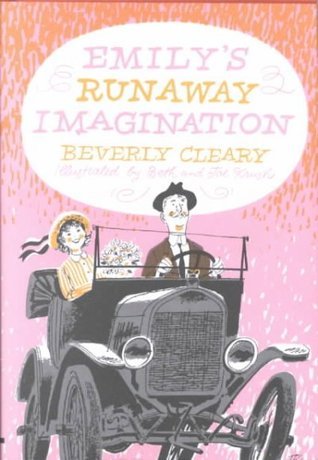
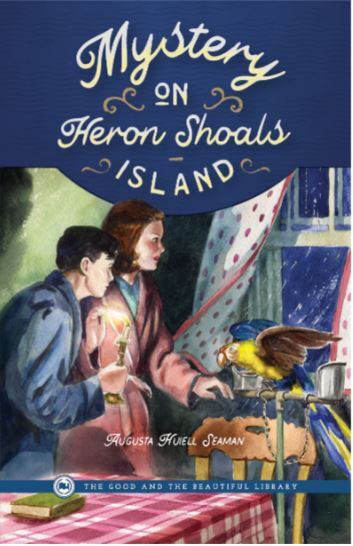
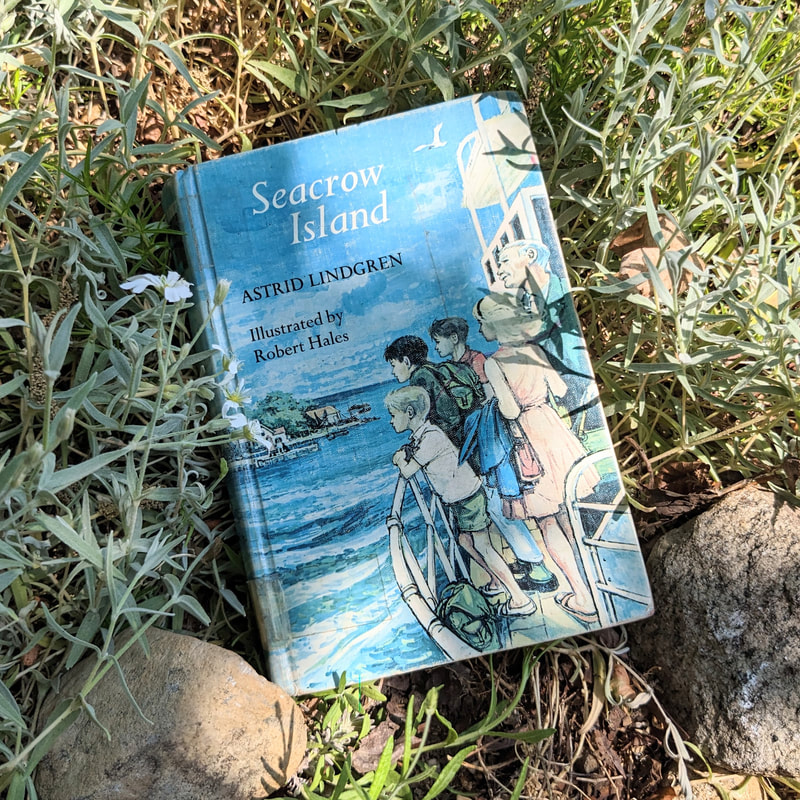
 RSS Feed
RSS Feed